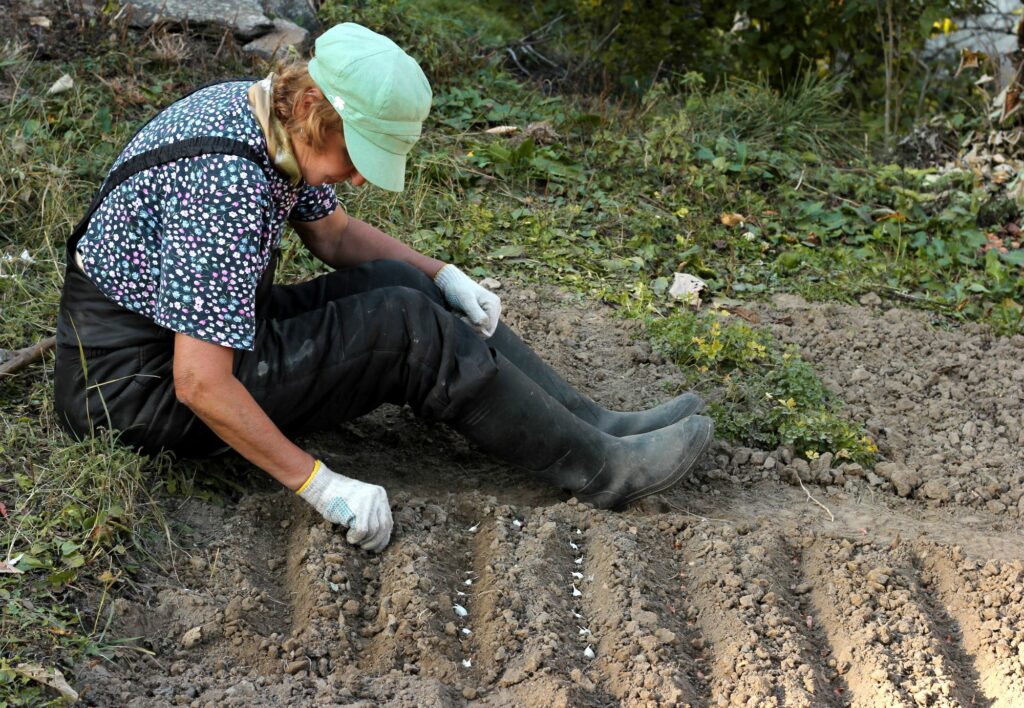Garlic is a versatile and flavorful herb that can add a lot of depth to any dish. If you’re a fan of this pungent plant and live in Western NC, you may be wondering when the best time to plant garlic is. Luckily, the climate in this region is well-suited for growing garlic, and there are a few key things to keep in mind when planting.
Understanding Garlic Varieties Before you start planting, it’s important to understand the different varieties of garlic available. Hardneck garlic is a popular choice for many gardeners in Western NC, as it tends to do well in colder climates.
Softneck garlic is another option, but it’s better suited for warmer climates. Once you’ve chosen the right variety for your garden, you can start planning your planting schedule.
Choosing the Right Time to Plant Garlic in Western NC The best time to plant garlic in Western NC is in the fall, usually between mid-September and mid-November. This allows the garlic to establish roots before the ground freezes, which is important for a healthy crop.
However, you’ll want to avoid planting too early in the fall, as garlic planted in warm soil may sprout too early and become damaged by frost. By following these guidelines, you can ensure a successful garlic harvest in your Western NC garden.
Key Takeaways
- Choose the right variety of garlic for your climate.
- Plant garlic in the fall between mid-September and mid-November.
- Avoid planting too early in the fall to prevent damage from frost.
Don’t miss these related articles!
When to Plant Garlic in Central Texas? 6 Important Considerations
When to Plant Garlic in South Carolina?
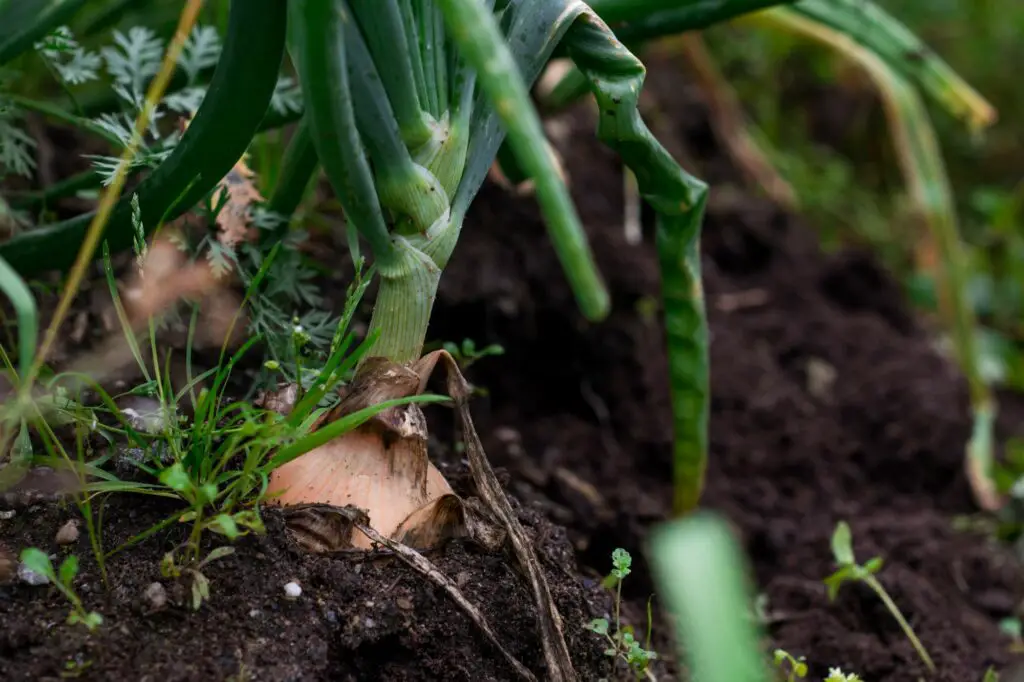
Understanding Garlic Varieties
Garlic is part of the allium family, and there are two main types of garlic: softneck and hardneck. Softneck garlic is the most commonly found garlic in grocery stores and is often used for cooking. Hardneck garlic is typically grown by gardeners and has a more complex flavor profile.
There are several different varieties of garlic within each type, each with its own unique characteristics. Some popular hardneck garlic varieties include Chesnok Red, New York White Neck, Purple Stripe, Rocambole, and Porcelain. German Extra Hardy is a popular softneck garlic variety.
Hardneck garlic varieties tend to have larger cloves and a stronger flavor, while softneck garlic varieties have smaller cloves and a milder flavor. Some softneck garlic varieties, such as German Extra Hardy, can be grown in colder climates, while most hardneck garlic varieties require a colder winter to grow properly.
When selecting garlic varieties to plant, it is important to consider the climate and growing conditions in your area. Some garlic varieties are better suited to certain climates than others. For example, Porcelain garlic is a good choice for cold climates, while Rocambole garlic prefers milder climates.
In addition to considering the growing conditions, it is also important to consider the intended use of the garlic. Some garlic varieties are better suited for roasting, while others are better suited for use in sauces or marinades.
When to Plant Garlic in Western NC
Garlic is a cool-season crop that thrives in mild winters and cool springs. Western North Carolina’s climate is ideal for growing garlic, but timing is critical. Planting garlic too early or too late can result in poor yields or even crop failure.
The best time to plant garlic in Western NC is in the fall. Garlic should be planted 4 to 6 weeks before the ground freezes to give the bulbs time to establish roots. This usually falls between mid-September to mid-October. Planting garlic in the fall allows the bulbs to overwinter and produce a harvest in the following summer.
Planting garlic too early in the spring can be risky due to the potential for cold weather. Garlic cannot survive frost or cold weather under 40 degrees Fahrenheit. If planted too early in the spring, they will die. Therefore, it is essential to wait until the soil has warmed up before planting garlic in the spring.
Western NC has three optimal growing seasons: spring, summer, and fall. Both day length and temperature vary dramatically between seasons. Short days and cold temperatures in winter to long days and high temperatures in summer.
Therefore, planting garlic in the fall is the best option as it allows the bulbs to overwinter and produce a harvest in the following summer.
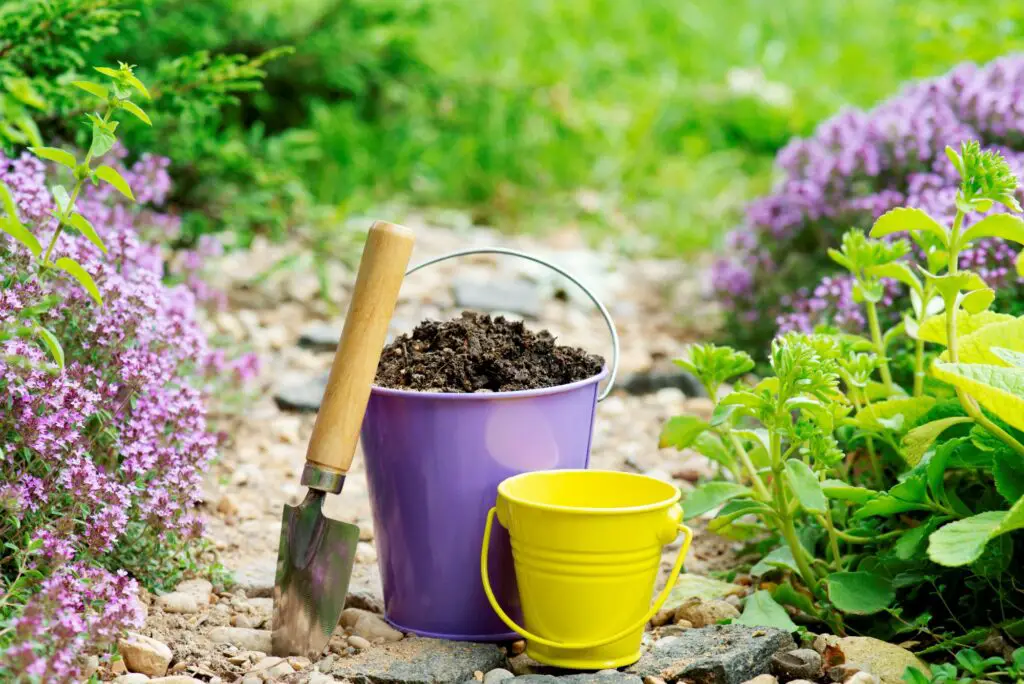
Preparing the Soil for Planting
Before planting garlic in Western NC, it is important to prepare the soil properly to provide the best growing conditions for the garlic bulbs. Garlic prefers loose, well-drained soil with a pH range of 6.0-7.0, which is the average for growing most vegetables.
One way to improve soil structure and fertility is by adding organic matter such as compost or well-aged manure. This can be done by mixing 2-3 inches of organic matter into the top 6-8 inches of soil. This will help improve soil structure, increase soil fertility, and improve water retention.
It is also important to ensure that the soil is well-drained. Garlic bulbs can rot in poorly drained soil, so it is recommended to plant garlic in well-drained soil or raised beds. To test soil drainage, dig a hole about 1 foot deep and fill it with water.
If the water drains within 24 hours, the soil is well-drained. If the water remains in the hole, the soil is poorly drained and may need to be amended with compost or other organic matter.
Planting Process of Garlic
To plant garlic in Western NC, one should start by selecting the right cloves. It is important to choose large, healthy cloves as they will produce larger bulbs. The cloves should be planted in a location that receives direct sunlight for at least six hours a day.
The cloves should be planted in well-draining soil that has been amended with organic matter, such as compost or aged manure. The soil should have a pH level between 6.0 and 7.0, which is the average for growing most vegetables.
The cloves should be planted 2-3 inches deep, with the pointed side facing up. They should be spaced 4-6 inches apart and planted in rows that are 12-18 inches apart. After planting, the soil should be lightly watered to help settle it around the cloves.
It is important to keep the soil moist but not waterlogged. Overwatering can cause the cloves to rot, while underwatering can result in smaller bulbs. Mulching the garlic bed with straw or leaves can help retain moisture and suppress weeds.
Garlic is a hardy plant that can tolerate cold temperatures and even frost. In Western NC, garlic should be planted in the fall, between mid-September and mid-October, to allow for a full growing season. The bulbs will be ready to harvest in mid-summer, when the leaves begin to yellow and dry out.
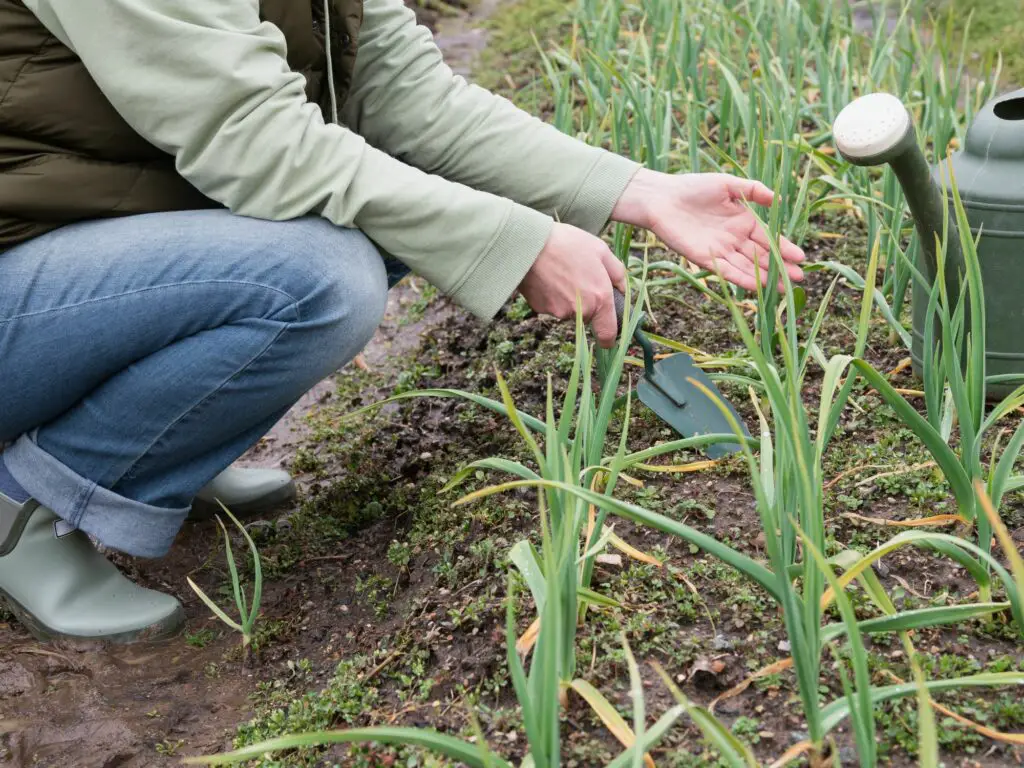
Caring for Your Garlic Plants
Once you have planted your garlic in Western North Carolina, it is important to care for them properly to ensure a healthy crop. Here are some tips for caring for your garlic plants:
Watering
Garlic plants require consistent watering throughout their growing season. It is important to keep the soil moist but not waterlogged. Overwatering can lead to fungal diseases, so be careful not to water too frequently. Water deeply once or twice a week, depending on the weather and soil conditions.
Mulch and Straw
Mulching your garlic plants can help to retain moisture in the soil and suppress weeds. Straw is a popular mulching material for garlic, as it allows air and water to circulate while keeping the soil cool. Apply a layer of straw or other organic mulch around the base of the plants, but be careful not to bury the stems.
Fertilizer and Manure
Garlic plants require a steady supply of nutrients to grow and produce healthy bulbs. Organic fertilizers, such as compost or well-rotted manure, are ideal for garlic. Apply fertilizer or manure in the fall, before planting, or in the spring, when the plants are actively growing.
Avoid using high-nitrogen fertilizers, as they can promote leaf growth at the expense of bulb development.
Water-Soluble Nitrogen Fertilizer
Water-soluble nitrogen fertilizer can be applied when the garlic plants are about six inches tall. This will give them a boost of nitrogen to help them grow strong and healthy. Be sure to follow the manufacturer’s instructions carefully and do not over-fertilize, as this can lead to burning and damage to the plants.
Shade
Garlic plants prefer full sun, but they can tolerate some shade. If your garden is in an area with hot summers, providing some shade can help to keep the soil cool and prevent the plants from drying out. Use shade cloth or plant your garlic near taller plants that can provide some shade.
Temperature and Humidity
Garlic plants prefer cool temperatures and moderate humidity. They can tolerate some frost, but prolonged exposure to freezing temperatures can damage or kill the plants. Be sure to protect your garlic plants from extreme weather conditions, such as heat waves or heavy rain.
Dealing with Common Pests and Diseases
Garlic is generally a low maintenance crop, but it is still susceptible to a few pests and diseases. Being aware of these potential problems and taking preventative measures can help ensure a successful harvest.
Pests
Bulb mites are one of the most common pests that garlic growers may encounter. These tiny pests can cause stunted plant growth, and the bulbs can rot in the ground or in storage.
Dry bulb mites are one of the most significant and widespread garlic pests. Growers should take preventative measures such as crop rotation and sanitation practices to reduce the risk of infestation.
Other pests that may affect garlic include onion thrips, which can cause yellowing and distortion of leaves, and cutworms, which can cut off seedlings at the base. These pests can be controlled by using insecticidal sprays or by introducing natural predators such as ladybugs and lacewings.
Diseases
Fungal diseases are the most common problems that garlic growers face. Fusarium basal rot and white rot are two of the most devastating fungal diseases that can affect garlic.
These diseases can cause the bulbs to rot and become unusable. Growers should practice crop rotation and avoid planting garlic in the same location for at least four years to reduce the risk of fungal diseases.
Downy mildew is another fungal disease that can affect garlic. It causes yellowing of leaves and a white or gray, fluffy growth low on the stem. Growers can prevent this disease by practicing good sanitation practices, such as removing infected plants and avoiding overhead watering.
Mold
Mold can also be a problem for garlic growers. Black mold can develop on garlic bulbs that have been damaged or bruised during harvest or storage. This mold can cause the bulbs to become soft and unusable. Growers should handle garlic bulbs carefully during harvest and storage to prevent damage.
Weeds
Weeds can compete with garlic plants for nutrients and water, which can reduce yields. Growers should use mulch or hand-weed around garlic plants to prevent weed growth. Using a pre-emergent herbicide before planting garlic can also help prevent weed growth.

Harvesting and Storing Garlic
Garlic is ready to harvest when the leaves start to turn brown and dry. The ideal time to harvest garlic is in mid-summer, around 7 to 9 months after planting. The garlic plant will produce a flower stalk called a garlic scape, which should be removed to allow the plant to focus its energy on bulb growth. Garlic scapes can be used in cooking and have a milder garlic flavor than the bulbs.
To harvest garlic, use a garden fork to gently loosen the soil around the bulbs. Be careful not to damage the bulbs, which can affect their storage life. Once the bulbs are loosened, gently pull them out of the ground by the leaves. Do not grab the bulbs by the stalks, as this can damage them.
After harvesting, garlic bulbs should be cured for several weeks to increase their storage life. To cure garlic, hang the bulbs in a dry, well-ventilated area out of direct sunlight. The ideal temperature for curing garlic is between 60 and 70 degrees Fahrenheit. Allow the bulbs to cure for 2 to 4 weeks, depending on the humidity in your area.
Once the garlic is fully cured, clean it up by removing the leaves at the neck and trimming the roots to 1/4 inch or 1/2 inch long. More dirt will dislodge and a couple layers of bulb wrappers may flake off, giving you a nice and neatly packaged bulb. Store garlic bulbs in a cool, dry, and dark place with good ventilation. Properly stored garlic can last for several months.
The yield of garlic bulbs will vary depending on the variety, growing conditions, and planting density. On average, a single garlic plant will produce 1 to 2 large bulbs or 4 to 6 smaller bulbs. To maximize yield, plant garlic cloves 4 to 6 inches apart in rows that are spaced 12 to 18 inches apart.
Companion Planting with Garlic
Companion planting is a traditional gardening technique where crops that can mutually benefit one another are planted close together. Garlic is a great companion plant for many vegetables, including onions, corn, sweet potatoes, leeks, peppers, potatoes, tomatoes, and more.
One of the benefits of planting garlic with these vegetables is that it can help repel pests. Garlic is a natural insecticide and can help keep pests away from other plants. For example, planting garlic with tomatoes can help keep aphids and spider mites away.
Garlic can also help improve the soil quality. It is a natural soil conditioner and can help improve soil structure and nutrient availability. When planting garlic with other vegetables, it can help enrich the soil and provide nutrients for the other plants.
When planting garlic with other vegetables, it is important to consider the growth habits of each plant. For example, garlic and onions have similar growth habits and can be planted close together. However, planting garlic with corn may not be ideal as corn is a tall plant that can shade the garlic.
Here are some companion plants that work well with garlic:
- Onions: Garlic and onions have similar growth habits and can be planted together. They can help repel pests and improve soil quality.
- Peppers: Garlic can help repel pests that are attracted to peppers, such as aphids and spider mites.
- Potatoes: Garlic can help repel pests that are attracted to potatoes, such as potato beetles. It can also help improve soil quality.
- Tomatoes: Garlic can help repel pests that are attracted to tomatoes, such as aphids and spider mites.
Here are some companion plants that may not work well with garlic:
- Beans: Garlic can inhibit the growth of beans, so it is best to avoid planting them together.
- Brassicas: Garlic can inhibit the growth of brassicas, such as broccoli and cauliflower.
- Peas: Garlic can inhibit the growth of peas, so it is best to avoid planting them together.
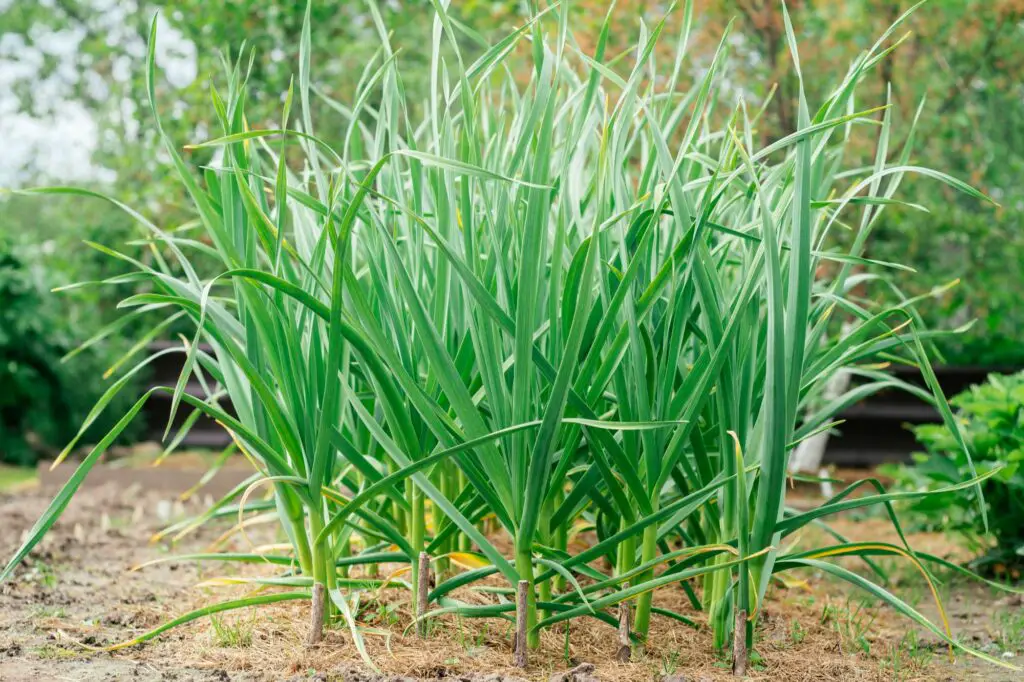
Additional Considerations for Growing Garlic in Western NC
Growing garlic in Western NC can be a rewarding experience for any gardener. However, there are some additional considerations to keep in mind when growing garlic in this region.
Transplanting Garlic
If you are transplanting garlic, it is best to do so in the late summer or early fall. This gives the garlic enough time to establish a strong root system before the cold period arrives.
Rainfall
Western NC receives a moderate amount of rainfall throughout the year, which is perfect for garlic. However, excessive rainfall can lead to root rot, so it is important to ensure proper drainage in your garlic beds.
Frost
The USDA hardiness zone for Western NC is 6b, which means that the average minimum winter temperature ranges from -5 to 0 degrees Fahrenheit. Garlic is a hardy plant that can withstand cold temperatures, but it is important to protect it from severe frost.
Growing Season
The growing season for garlic in Western NC is from late fall to early summer. Garlic planted in the fall will be ready for harvest in the summer, while garlic planted in the spring will be ready for harvest in the fall.
Flower Stalks
Garlic produces flower stalks, which can be removed to encourage bulb growth. However, some gardeners prefer to leave the flower stalks to add flavor to their dishes.
Taste
Garlic grown in Western NC has a slightly milder taste compared to garlic grown in other regions. This is due to the cooler temperatures and shorter growing season.
Hay
Some gardeners use hay as a mulch to protect their garlic from frost and to retain moisture. However, hay can also attract rodents, so it is important to monitor your garlic beds regularly.
Frequently Asked Questions
What is the best time of year to plant garlic in Western NC?
The ideal time to plant garlic in Western NC is in the fall, between September and October. This allows the garlic to establish its roots and grow before the winter sets in. Planting garlic in the fall ensures that the bulbs will be ready for harvest in the summer.
How do you properly plant garlic in Western NC?
To plant garlic in Western NC, first, choose a well-drained area with full sun exposure. Then, break apart the garlic bulbs into individual cloves and plant them about 2-3 inches deep and 4-6 inches apart. Cover the cloves with soil and water thoroughly. After planting, mulch the bed with straw or leaves to retain moisture and suppress weed growth.
What are some companion plants for garlic in Western NC?
Garlic grows well with many companion plants, including lettuce, spinach, carrots, and beets. These plants help to deter pests and improve soil health. Avoid planting garlic near beans, peas, and other legumes, as they can stunt the growth of garlic.
Can garlic be planted in the spring in Western NC?
While fall is the best time to plant garlic in Western NC, it is possible to plant garlic in the spring. However, spring-planted garlic may produce smaller bulbs than fall-planted garlic. Spring-planted garlic should be planted as soon as the soil can be worked, usually in late February or early March.
When is the best time to harvest garlic in Western NC?
Garlic is typically ready for harvest in Western NC in late June or early July. The leaves of the garlic plant will begin to yellow and die back, indicating that the bulbs are ready for harvest. Carefully dig up the bulbs and allow them to dry in a warm, dry place for several weeks before storing.
What are the recommended garlic varieties for growing in Western NC?
Some of the best garlic varieties for growing in Western NC include Inchelium Red, Chesnok Red, and Spanish Roja. These varieties are well-suited to the climate and soil conditions of Western NC and produce large, flavorful bulbs.

Hey, I’m Lisa and I’ve been an avid gardener for over 30 years. I love writing, talking and living in the garden! Feel free to connect with me on my socials below

